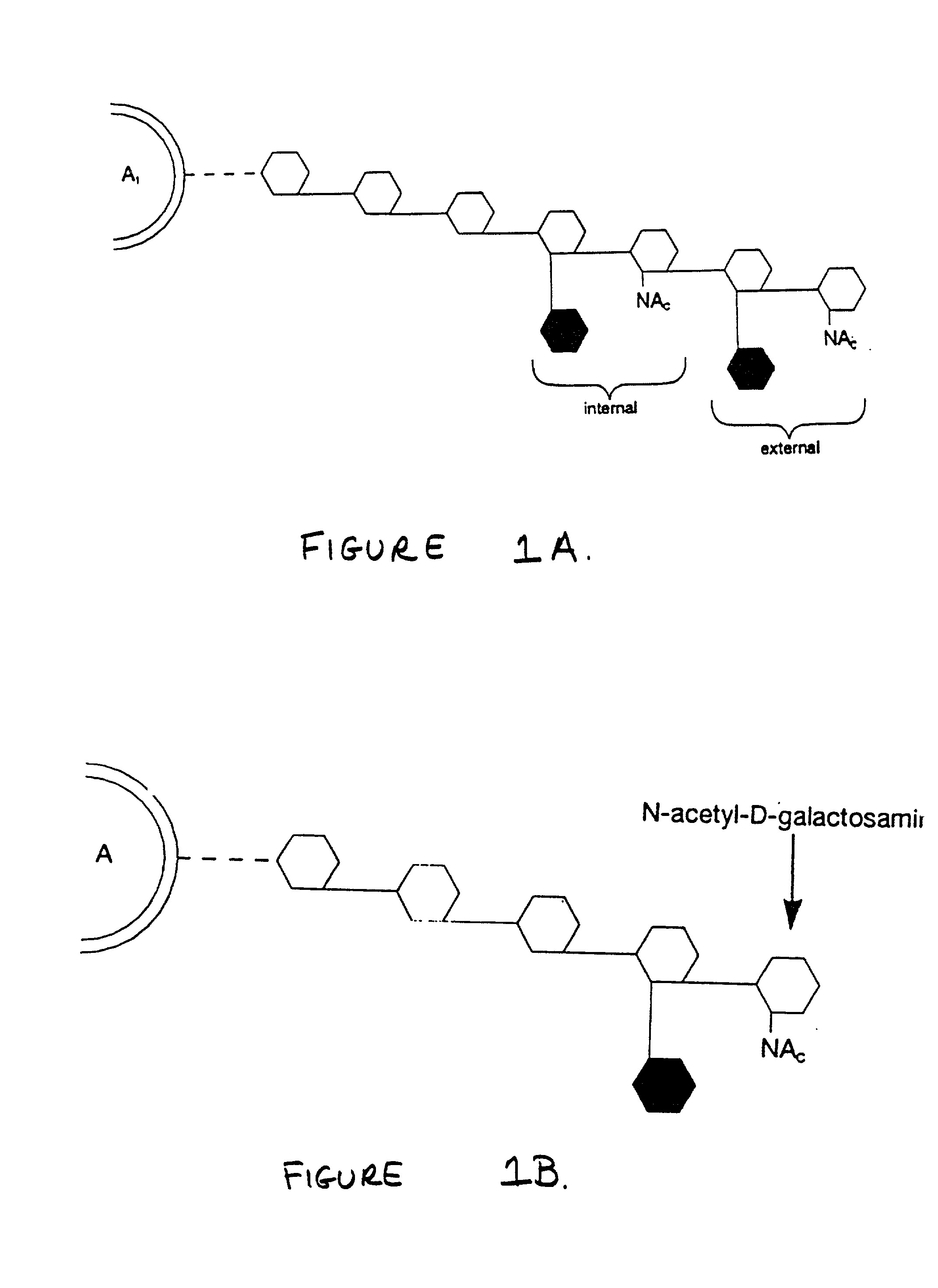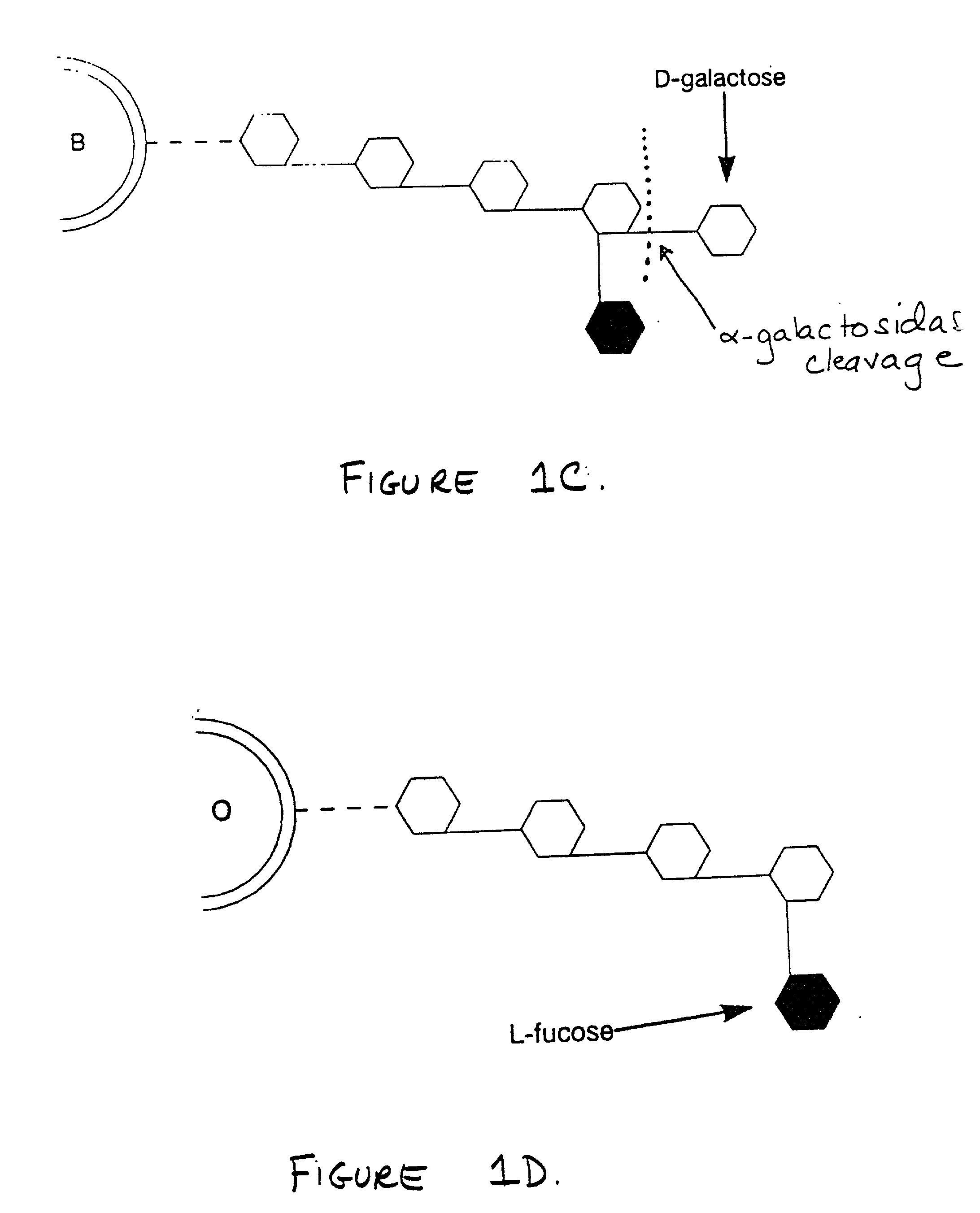Method for conversion of blood type
a blood type and conversion method technology, applied in the field of enzymatic methods, can solve the problems of severe and potentially life-threatening reaction, insufficient type o blood supply to meet transfusion needs, and troublesome blood transfusions
- Summary
- Abstract
- Description
- Claims
- Application Information
AI Technical Summary
Problems solved by technology
Method used
Image
Examples
first embodiment
[0044] For example, but not by way of limitation, in the invention, where a standard blood unit (here, referring to a standard United States unit of packed red blood cells), concentrated to a hematocrit of 85-95 percent and constituting a pre-conversion erythrocyte suspension at a conversion pH of 5.4-5.8 and preferably 5.4-5.6, is to be converted to remove B antigen by coffee bean .alpha.-galactosidase, 32,000-45,000 enzyme units and preferably 45,000 enzyme units of coffee bean .alpha.-galactosidase (preferably recombinant coffee bean .alpha.-galactosidase expressed in Pichia pastoris) in a volume of 20-30 ml of phosphate citrate-sodium chloride buffer (which is 0.021 M citric acid monohydrate, 0.058 M sodium phosphate dibasic (anhydrous), and 0.077 M sodium chloride) pH 5.6.+-.0.05, may be added to the erythrocyte suspension. The enzyme / erythrocyte mixture may then be incubated at a temperature of 4-37.degree.C., preferably 26.degree.C., for 1-24 hours, preferably 135 minutes, wi...
second embodiment
[0047] In a fourth specific nonlimiting embodiment, which is a variation of the preceding embodiment, and similar to the second embodiment set forth above, the erythrocyte / enzyme mixture may contain 1-6 percent and preferably 2-4 percent (weight / volume) polyethylene glycol or an equivalent derivative thereof, in which case the amount of N-acetylgalactosaminidase required may be decreased by 30-50 percent and the amount of time required for antigen removal may be decreased by 10-30 percent.
[0048] In a fifth specific nonlimiting embodiment, where a standard blood unit, concentrated to a hematocrit of 85-95 percent, constituting a pre-conversion erythrocyte suspension at a conversion pH of 5.4-7.0 and preferably 5.8-6.5, is to be converted to remove residual A antigen by .beta.-endogalactosidase from Flavobacterium keratolytics, 10-120,000 enzyme units and preferably 10,000-40,000 enzyme units of .beta.said .beta.-endogalactosidase, in a volume of 0.5-40 ml. of phosphate / sodium chlorid...
PUM
| Property | Measurement | Unit |
|---|---|---|
| pH | aaaaa | aaaaa |
| pH | aaaaa | aaaaa |
| volume | aaaaa | aaaaa |
Abstract
Description
Claims
Application Information
 Login to View More
Login to View More - R&D
- Intellectual Property
- Life Sciences
- Materials
- Tech Scout
- Unparalleled Data Quality
- Higher Quality Content
- 60% Fewer Hallucinations
Browse by: Latest US Patents, China's latest patents, Technical Efficacy Thesaurus, Application Domain, Technology Topic, Popular Technical Reports.
© 2025 PatSnap. All rights reserved.Legal|Privacy policy|Modern Slavery Act Transparency Statement|Sitemap|About US| Contact US: help@patsnap.com



